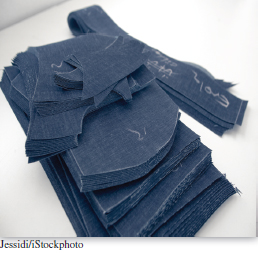CHAPTER 17
Scheduling

LEARNING OBJECTIVES
 AFTER READING THIS CHAPTER, YOU WILL BE ABLE TO:
AFTER READING THIS CHAPTER, YOU WILL BE ABLE TO:
- Explain the multiple dimensions of a good schedule, and determine which type of schedule is appropriate for different types of productive systems.
- Use several different quantitative techniques for loading, sequencing, and monitoring work.
- Discuss advanced planning and scheduling systems, and contrast finite and infinite scheduling.
- Use the theory of constraints to identify the bottleneck and pace a system to the bottleneck operation.
- Create efficient and equitable employee schedules.
SCHEDULING APPAREL PRODUCTION
There are many types of production processes involved in the jeans supply chain, and thus many different scheduling problems. The production of denim fabric from cotton to fibers to yarn, through weaving, dyeing, and finishing, is highly automated, and has continuous production characteristics. Scheduling of textile equipment involves assigning production to different looms (the assignment method discussed in this chapter), determining the length of the production run or batch size (the economic production quantity from Chapter 13), and monitoring the equipment for performance (speed and feed of fabric, optimal weave patterns, mixtures of dye, heat treatment, multi-pass dyeing ...
Get Operations and Supply Chain Management, 8th Edition now with the O’Reilly learning platform.
O’Reilly members experience books, live events, courses curated by job role, and more from O’Reilly and nearly 200 top publishers.

